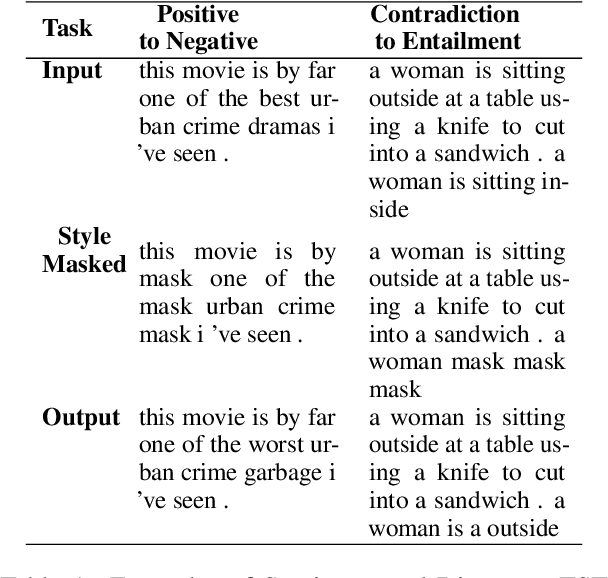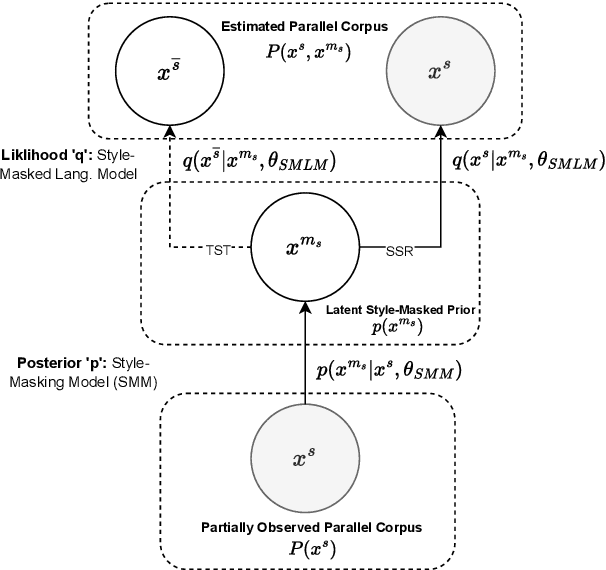Pooja Shekar
On Text Style Transfer via Style Masked Language Models
Oct 12, 2022



Abstract:Text Style Transfer (TST) is performable through approaches such as latent space disentanglement, cycle-consistency losses, prototype editing etc. The prototype editing approach, which is known to be quite successful in TST, involves two key phases a) Masking of source style-associated tokens and b) Reconstruction of this source-style masked sentence conditioned with the target style. We follow a similar transduction method, in which we transpose the more difficult direct source to target TST task to a simpler Style-Masked Language Model (SMLM) Task, wherein, similar to BERT \cite{bert}, the goal of our model is now to reconstruct the source sentence from its style-masked version. We arrive at the SMLM mechanism naturally by formulating prototype editing/ transduction methods in a probabilistic framework, where TST resolves into estimating a hypothetical parallel dataset from a partially observed parallel dataset, wherein each domain is assumed to have a common latent style-masked prior. To generate this style-masked prior, we use "Explainable Attention" as our choice of attribution for a more precise style-masking step and also introduce a cost-effective and accurate "Attribution-Surplus" method of determining the position of masks from any arbitrary attribution model in O(1) time. We empirically show that this non-generational approach well suites the "content preserving" criteria for a task like TST, even for a complex style like Discourse Manipulation. Our model, the Style MLM, outperforms strong TST baselines and is on par with state-of-the-art TST models, which use complex architectures and orders of more parameters.
 Add to Chrome
Add to Chrome Add to Firefox
Add to Firefox Add to Edge
Add to Edge